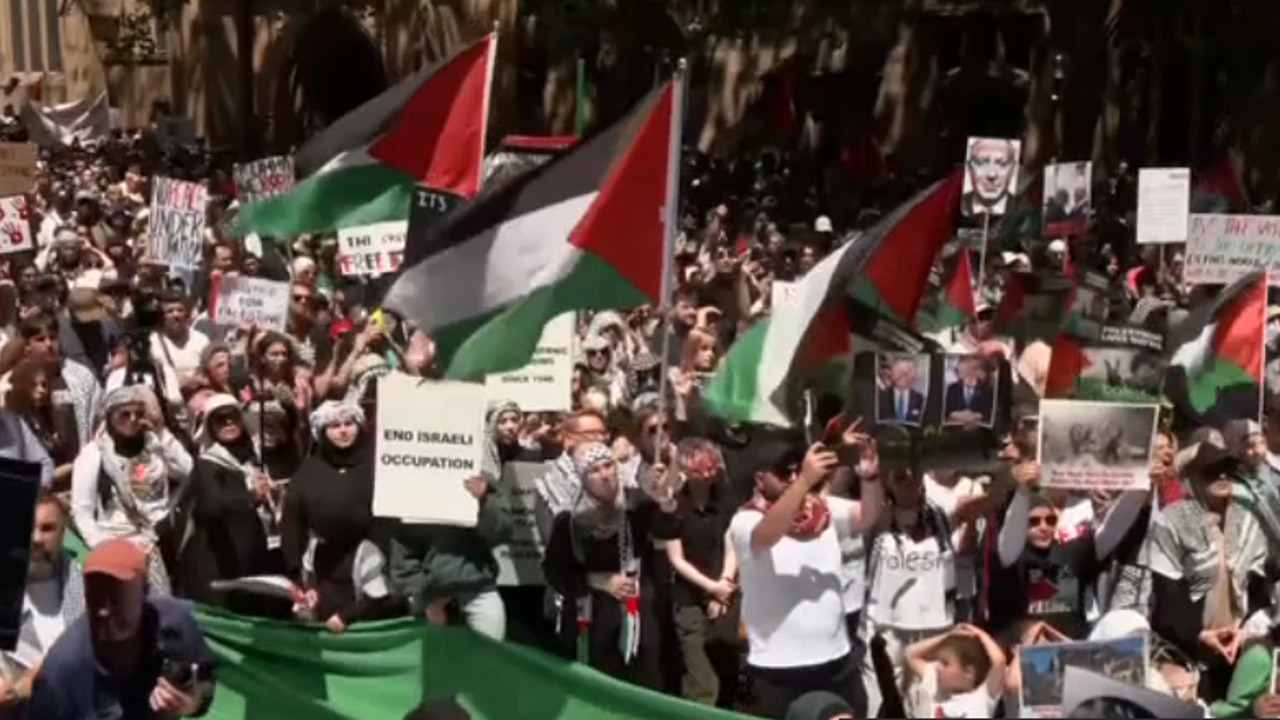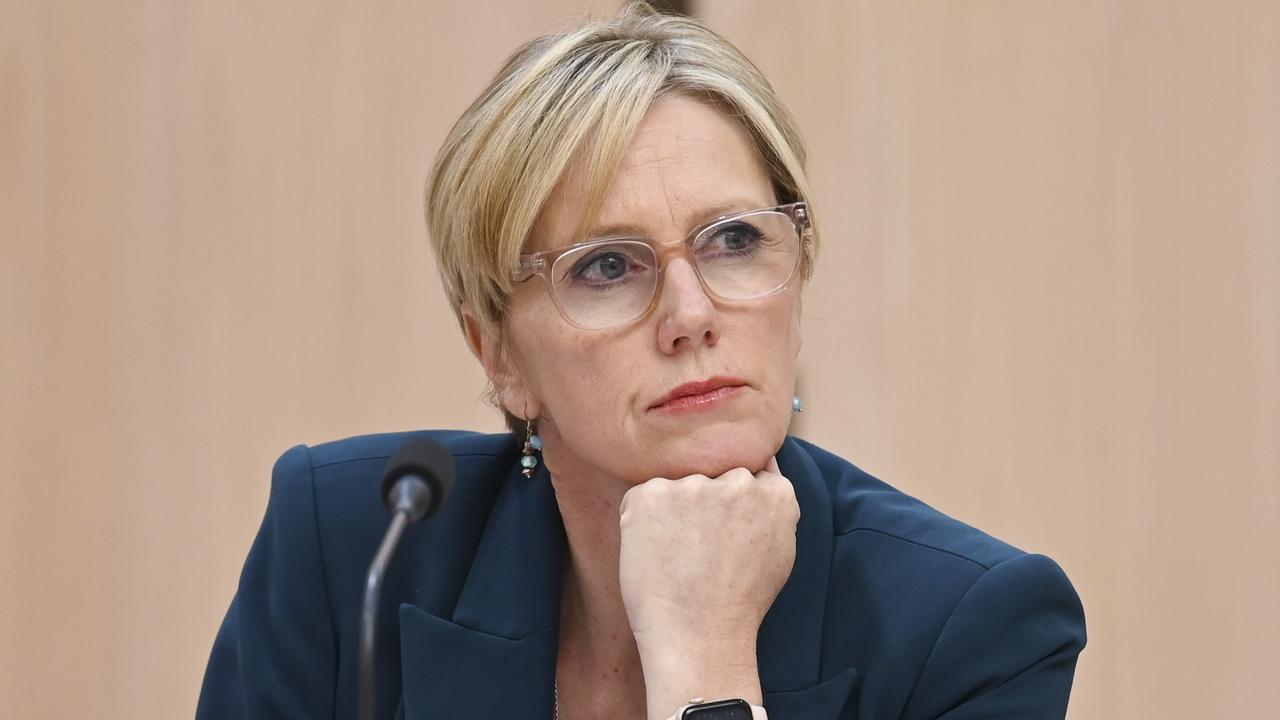NSW Police abandon bid to stop October 6 protest in Sydney despite ‘tinder box’ warning
NSW police have abandoned a bid to stop a protest going ahead in Sydney’s CBD on October 6 – the eve of the anniversary of the Hamas attack on Israel – after telling a court it could be a ‘tinder box’ for Sydney.

Police have dropped a bid to stop a rally in Sydney’s CBD on Sunday – the eve of the anniversary of Hamas’s attack on Israel – after the route of the march was changed, while a pro-Palestinian candlelight vigil on October 7 will also go ahead.
It followed three hours of hearings in the NSW Supreme Court on Thursday, and backroom discussions between the Commissioner of NSW Police and pro-Palestine protest organiser Palestine Action Group about the route of the march.
After initiating the proceedings in the Supreme Court to put an end to the planned protest ending at Hyde Park, NSW police indicated they did not object to a new path, submitted late in the day by PAG, that would avoid the Great Synagogue between Elizabeth and Castlereagh streets by an extra block.
PAG said they expected 5000 people to attend Sunday’s protest but police estimate numbers closer to 15,000 given escalating tensions in Lebanon. The group has held protests each week for 51 weeks.

NSW police had also attempted to obtain a prohibition order for a public assembly on October 7, but earlier in the day PAG withdrew a court order for that event, saying they never needed police permission to hold a vigil and notified authorities only “in good faith”.
Outside court, PAG organisers said they still intended to hold the candlelight vigil on October 7, potentially at Town Hall, in which they expect 200 people but said “the bigger the better” because it meant “more people are coming to mourn the lives of Palestinians”.
“The main protest we’re building is the October 6 protest … The vigil on Monday was only ever intended to be a small candlelight vigil as a milestone, we don’t need a Form 1 for that,” organiser Josh Lees said outside court. A Form 1 is the paperwork required to hold an authorised public assembly.
Assistant Commissioner Peter McKenna said police “felt a different undertone within the protest group” at the weekend amid a large “uptake” of the Lebanese community to the protests, with 4500 in attendance compared with about 500 in previous weeks.

“It is described to me by the police on the ground as a more aggressive feeling at the moment and we’re very concerned by it,” he said.
“Not the least was last weekend when we were dealing with a number of people carrying prohibited articles and flags and I know when the police had to interject at times there, it became quite aggressive to the point that a number of officers were surrounded by young men and … OC spray had to be sprayed.”
He also said the protection afforded to the protesters who had a Form 1, meaning their protest was authorised, would leave police “with less control and reduced ability to intervene” such as utilising move-on directions or threatening charges.
McKenna told the court 10 people were warned by police at the Sunday’s protest about the display of Hezbollah flags.
Outside court, another PAG organiser, Amal Naser, called Mr McKenna’s comments about the Lebanese community and Hezbollah articles and flags “racist dog-whistling”.

“He made it in specific reference to the Lebanese community,” Mr Naser said. “It’s obvious racism and it’s obvious targeting at Lebanese community members who are rightfully mourning the loss of their family members and the invasion of their family.
“We’ve had no issues for 51 weeks. This is clear coming from political pressure from the top – from the Prime Minister and from the Premier. And all they’ve done is drag us through the courts for a week, waste public resources … but they’ve promoted our protest.”
Earlier, Mr McKenna told the court it would be “provocative” for pro-Palestine protesters to walk a protest route past the Great Synagogue, particularly on a Jewish holiday, and make it “very difficult for police to ensure public safety” to put the two groups in such proximity.
He said it could “only take one or two people to say the wrong thing and it could be a tinder box, it could be something quite significant we have to deal with.”
PAG’s barrister, Arjun Chhabra, claimed the police had suggested the route through Hyde Park, rather than Town Hall, and then took issue with it in court. He also said shutting down the protest on October 6 would “undermine” freedoms based on a few bad actors.
“At its highest, the evidence goes to 10 individuals out of 4500; my maths may be shaky but that’s some 0.2 per cent. To rely on 0.2 per cent, to deny 99.8 per cent … of legally compliant individuals … will undermine those zealously guarded rights of freedom.”
Earlier on Thursday, NSW Premier Chris Minns said it was reasonable for police to be “highly sceptical that (it) would be a candlelight vigil in the middle of the CBD for 200 people on a Monday evening”, saying there was likely to be thousands of people in attendance.
“That’s not out of pure conjecture or a hypothesis; 12 months ago on the streets of Sydney, a protest or a vigil that was meant to take place in Town Hall ended up all the way down at the Opera House and on the front pages of newspapers right around the world. No, we don’t want a repeat of that, neither do NSW police … And it’s reasonable for the government and the police to try and stop those scenes from being repeated.”
Prominent Lebanese Muslim community leader Jamal Rifi said he believed that while an element of “professional disrupters” had hijacked parts of Sunday’s protest, for a lot of the community the rally was a way to “overcome their helplessness” about what was happening in Lebanon.


